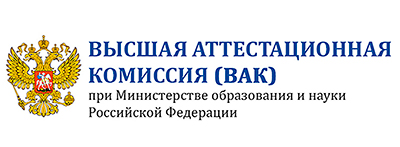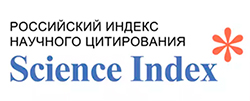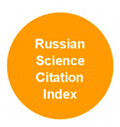The structure of directly related alcohol mortality In Russia from 2011 to 2021
Abstract
The aims of this paper are to study the structure of mortality from directly related alcohol mortality (mortality causes with the word "alcohol" in the name) and life expectancy losses in Russia in 2011-2021 years.
Despite the general trend towards a decrease in directly related alcohol mortality, its increase was observed twice in the studied time interval. In 2014-2015 it was presumably due to the weakening of anti-alcohol policies; in 2020, most likely to social tensions caused by the Covid-19 pandemic.
The highest rates of directly related alcohol mortality in 2011-2021 are consistently observed at the age of 40-65 years. The most noticeable decrease that occurred was also observed in these ages; more than 70% of directly related alcohol deaths in 2021 were in working age.
The structure of causes of death in the studied period changed insignificantly. The leading cause is consistently accounted for by alcoholic cardiomyopathy, which is about a third of the structure of directly related alcohol mortality. This is followed by alcohol poisoning and alcoholic liver disease. Together, these three causes of death account for more than 80% of directly related alcohol mortality. In the structure of female mortality, compared with men the share of alcoholic liver disease is higher; and in the structure of male mortality, compared with women alcohol poisoning is higher. Losses in life expectancy as a result of directly related alcohol mortality averaged 0.58 years per year from 2011-2021. It is important to bear in mind that mortality directly related to alcohol is only a small part of all mortality associated with alcohol consumption.
Downloads
References
Будаев Б.С., Михеев А.С., Тармаева И.Ю., Богданова О.Г. (2020). Оценка динамики показателя смертности от алкоголь-ассоциированных причин на региональном уровне. Сибирский научный медицинский журнал, 40(3), 88-98. https://doi.org/10.15372/SSMJ20200313
Вишневский А.Г. (2017). Смертность от внешних причин в России с середины XX века. М.: Федеральное государственное автономное образовательное учреждение высшего образования Национальный исследовательский университет «Высшая школа экономики».
Всемирная организация здравоохранения (2021). Сделать Европейский регион ВОЗ более безопасным: успехи в реализации политики в отношении контроля над алкогольной продукцией, 2010–2019 гг. Копенгаген: Европейское региональное бюро ВОЗ. https://apps.who.int/iris/handle/10665/340776
Всемирная организация здравоохранения. Алкоголь (2018). https://www.who.int/ru/news-room/fact-sheets/detail/alcohol (данные загружены 09.05.2021).
Давыдова З.В., Ягмуров О.Д. (2019). Судебно-медицинская экспертиза алкоголь-атрибутивной смертности в Санкт-Петербурге. Педиатр, 10(2), 55-62. https://doi.org/10.17816/PED10255-62
Европейское региональное бюро ВОЗ (2021). Инициатива SAFER: сделать Европейский регион ВОЗ более безопасным. Успехи в реализации политики в отношении контроля над алкогольной продукцией, 2010–2019 гг. Копенгаген. https://apps.who.int/iris/bitstream/handle/10665/340776/9789289055055-rus.pdf
Зайкова З.А. (2016). Алкоголь как фактор риска преждевременной смертности населения Иркутской области. Анализ риска здоровью, 2(14), 45-59.
Замятнина Е.С. (2021). Обзор методов оценки вклада потребления алкоголя в смертность в России. Современные проблемы здравоохранения и медицинской статистики, (3), 29-49. http://healthproblem.ru/magazines?text=661
Кваша Е.А., Харькова Т.Л., Юмагузин В.В. (2014). Смертность от внешних причин в России за полвека. Демографическое обозрение, 1(4 (4)), 68-95. https://doi.org/10.17323/demreview.v1i4.1803
Кваша Е.А., Харькова Т.Л. (2017, апрель). Опасное потребление алкоголя и тенденции продолжительности жизни в России. Доклад, представленный на XVIII Апрельской конференции, секция A. Макроэкономика и экономический рост. Москва, Россия. https://iq.hse.ru/data/2017/06/16/1170387100/%d0%9e%d0%a1-%d0%b0%d0%bb%d0%ba%d0%be-%d0%bf%d1%80%d0%b5%d0%b7%d0%b5%d0%bd%d1%82%d1%83%d1%85%d0%b0-%d0%9a%d0%b2%d0%b0%d1%88%d0%b0_%d0%a5%d0%b0%d1%80%d1%8c%d0%ba%d0%be%d0%b2%d0%b0_13_04_2017.pdf
Ковалев А.В., Морозов Ю.Е., Самоходская О.В., Березников А.В. (2017). Алкоголь-ассоциированная смертность в России (по материалам 2011-2016 гг.). Судебно-медицинская экспертиза, 60(6), 4-8. https://doi.org/10.17116/sudmed20176064-8
Козырева П.М., Смирнов А.И. (2018). Проблемы медицинского обслуживания в сельской местности. Гуманитарий Юга России, 7(4), 33-49. https://doi.org/10.23683/2227-8656.2018.4.3
Кузнецова П.О. (2020). Алкогольная смертность в России: оценка с помощью данных репрезентативного обследования. Население и экономика, 4(3), 75-95. https://doi.org/10.3897/popecon.4.e51653
Ларев З.В., Павлова А.З., Богомолов Д.В., Плюхин С.В., Прокопьева Т.В., Васильева А.С. (2018). Странгуляционная асфиксия как результат суицидальной активности при алкогольных интоксикациях. Судебная медицина, 4(S1), 62-62.
Мадьянова В.В., Какорина Е.П. (2021). Смертность лиц старше трудоспособного возраста от последствий воздействия внешних причин. Проблемы социальной гигиены, здравоохранения и истории медицины, 29(5), 1094-1102. http://dx.doi.org/10.32687/0869-866X-2020-29-5-1094-1102
Мордовский Э.А. (2018). Потери жизненного потенциала и экономический ущерб, обусловленный алкоголь-атрибутивной смертностью, в приарктических регионах Европейского Севера России. Менеджер здравоохранения, (2), 16-28.
Немцов А.В., Гридин Р.В. (2020). Косвенные показатели потребления алкоголя во время эпидемии коронавируса в России. Вопросы наркологии, (10), 16-33. https://psychiatr.ru/download/5215?view=1&name=16-33.pdf
Пьянкова А.И., Фаттахов Т.А. (2020). Резервы роста ожидаемой продолжительности жизни в северных регионах России. Профилактическая медицина, 23(2), 89‑96. https://doi.org/10.17116/profmed20202302189
Росстат (2022a). Методика расчета полных таблиц смертности. https://rosstat.gov.ru/storage/mediabank/Prez-251219.pdf (данные загружены 28.03.2022).
Росстат (2022b). Ожидаемая продолжительность жизни при рождении. https://www.fedstat.ru/indicator/31293 (данные загружены 28.03.2022).
Рощина Я.М. (2012). Динамика и структура потребления алкоголя в современной России. Вестник Российского мониторинга экономического положения и здоровья населения НИУ ВШЭ, 2, 238-257.
Сабгайда Т.П., Ростовская Т.К. (2020). Смертность женщин в российской федерации. Экология человека, (11), 46-52. https://doi.org/10.33396/1728-0869-2020-11-46-52
Саввина Н.В., Бессонова О.Г., Борисова Е.А., Колбина Е.Ю., Калмаханов С.Б., Гржибовский А.М. (2019). Анализ потенциальной мисклассификации причин смерти от болезней системы кровообращения по данным бюро судебно-медицинской экспертизы в г. Якутске в 2007-2018 гг. Экология человека, (10), 59-64. https://doi.org/10.33396/1728-0869-2019-10-59-64
Салагай О.О., Сошкина К.В., Брюн Е.А., Кекелидзе З.И., Клименко Т.В., Кобякова О.С., Халтурина Д.А., Зыков В. А. (2021). Научная оценка степени реализации госполитики по снижению масштабов злоупотребления алкогольной продукцией и профилактике алкоголизма среди населения Российской Федерации на период до 2020 года. Общественное здоровье, 1(2), 5-19. https://doi.org/10.21045/2782-1676-2021-1-2-5-19
Сапожников С.П., Козлов В.А., Кичигин В.А., Голенков А.В. (2018). Contribution of alcohol to mortality from external causes. Human ecology, (3), 51-57. https://doi.org/10.33396/1728-0869-2018-3-51-57
Семёнова В.Г., Сабгайда Т.П., Михайлов А.Ю., Запорожченко В.Г., Евдокушкина Г.Н., Гаврилова Н.С. (2018). Смертность населения России от причин алкогольной этиологии в 2000-е годы. Социальные аспекты здоровья населения, 59(1). http://vestnik.mednet.ru/content/view/950/30/lang,ru/
Школьников В.М., Червяков В.В. (2000). Политика по контролю кризисной смертности в России в переходный период. М.: ПРООН.
Chrystoja B.R., Monteiro M.G., Owe G., Gawryszewski V.P., Rehm J., Shield K. (2021). Mortality in the Americas from 2013 to 2015 resulting from diseases, conditions and injuries which are 100% alcohol-attributable. Addiction, 116(10), 2685-2696. https://doi.org/10.1111/add.15475
Friesen E. L., Bailey J., Hyett S., Sedighi S., Snoo M. L., Williams K., Barry R., Erickson A., Foroutan F., Selby P., Rosella L., Kurdyak P. (2021). Hazardous alcohol use and alcohol-related harm in rural and remote communities: a scoping review. The Lancet Public Health. https://doi.org/10.1016/S2468-2667(21)00159-6
Griswold M.G., Fullman N., Hawley C., Arian N., Zimsen S.R., Tymeson H.D., Venkateswaran V., Tapp A.D., Forouzanfar M.H., Salama J.S., Abate K.H. (2018). Alcohol use and burden for 195 countries and territories, 1990–2016: a systematic analysis for the Global Burden of Disease Study 2016. The Lancet. 392(10152), 1015-35. https://doi.org/10.1016/S0140-6736(18)31310-2
Knopf A. (2021). Drinking to cope: Women with young children. Alcoholism & Drug Abuse Weekly, 33(32), 1-3. https://doi.org/10.1002/adaw.33162
Korotayev A., Khaltourina D., Meshcherina K., Zamiatnina E. (2018). Distilled spirits overconsumption as the most important factor of excessive adult male mortality in Europe. Alcohol and Alcoholism, 53(6), 742-752. https://doi.org/10.1093/alcalc/agy054
Korotayev A., Khaltourina D., Shishkina A., Issaev L. (2021). Non-beverage alcohol consumption in Izhevsk: 15 years later. Alcohol and Alcoholism, 56(4), 470-474. https://doi.org/10.1093/alcalc/agaa116
Kuznetsova P.O. (2020). Alcohol mortality in Russia: assessment with representative survey data. Population and Economics, 12(4), 75. https://doi.org/10.3897/popecon.4.e51653
Leon D.A., Saburova L., Tomkins S., Andreev E.M., Kiryanov N., McKee M., Shkolnikov V.M. (2007). Hazardous alcohol drinking and premature mortality in Russia: a population based case-control study. The Lancet, 369(9578), 2001-9. https://doi.org/10.1016/S0140-6736(07)60941-6
McCartney G., Mahmood L., Leyland A.H., Batty G.D., Hunt K. (2011). Contribution of smoking-related and alcohol-related deaths to the gender gap in mortality: evidence from 30 European countries. Tobacco control, 20(2), 166-168. http://dx.doi.org/10.1136/tc.2010.037929
McKee M., Shkolnikov V., Leon D.A. (2001). Alcohol is implicated in the fluctuations in cardiovascular disease in Russia since the 1980s. Annals of epidemiology, (11), 1-6. https://doi.org/10.1016/S1047-2797(00)00080-6
Milic, J., Glisic, M., Voortman, T., Borba, L. P., Asllanaj, E., Rojas, L. Z., Troup J., Kiefte-de Jongade J.C., Beeck E., Muka T., Franco, O. H. (2018). Menopause, ageing, and alcohol use disorders in women. Maturitas, 111, 100-109. https://doi.org/10.1016/j.maturitas.2018.03.006
Nemtsov A.V. (2002). Alcohol‐related human losses in Russia in the 1980s and 1990s. Addiction, 97(11), 1413-1425. https://doi.org/10.1046/j.1360-0443.2002.00262.x
Neufeld M., Rehm J. (2013). Alcohol consumption and mortality in Russia since 2000: are there any changes following the alcohol policy changes starting in 2006? Alcohol and alcoholism, 48(2), 222-30. https://doi.org/10.1093/alcalc/ags134
Rehm J., Shield K.D. (2019). Global burden of alcohol use disorders and alcohol liver disease. Biomedicines, 7(4), 99. https://doi.org/10.3390/biomedicines7040099
Rehm J., Taylor B., Patra J. (2006). Volume of alcohol consumption, patterns of drinking and burden of disease in the European region 2002. Addiction, 101(8), 1086-1095. https://doi.org/10.1111/j.1360-0443.2006.01491.x
Rosano A., Bella A., Gesualdo F., Acampora A., Pezzotti P., Marchetti S., Ricciardi F., Rizzo C. (2019). Investigating the impact of influenza on excess mortality in all ages in Italy during recent seasons (2013/14–2016/17 seasons). International Journal of Infectious Diseases, 88, 127-134. https://doi.org/10.1016/j.ijid.2019.08.003
Shield K., Manthey J., Rylett M., Probst C., Wettlaufer A., Parry C.D., Rehm J. (2020). National, regional, and global burdens of disease from 2000 to 2016 attributable to alcohol use: a comparative risk assessment study. The Lancet Public Health, 5(1), e51-61. https://doi.org/10.1016/S2468-2667(19)30231-2
Shield K.D., Chrystoja B.R., Ali S., Sohi I., Rehm J., Nigatu Y.T., Elton-Marshall T., Hamilton H., Jankowicz D., Wells S. (2022). Changes in alcohol consumption in Canada during the COVID-19 pandemic: associations with anxiety and self-perception of depression and loneliness. Alcohol and Alcoholism, 57(2), 190-197. https://doi.org/10.1093/alcalc/agab055
Shkolnikov V.M., Andreev E.M., Leon D.A., McKee M., Meslé F., Vallin J. (2004). Mortality reversal in Russia: the story so far. Hygiea Internationalis, 4(1), 29-80.
Spillane S., Shiels M.S., Best A.F., Haozous E.A., Withrow D.R., Chen Y., Berrington de González A., Freedman N.D. (2020). Trends in alcohol-induced deaths in the United States, 2000-2016. JAMA network open, 3(2), e1921451-e1921451. https://jamanetwork.com/journals/jamanetworkopen/fullarticle/2761545
Starodubov V.I., Marczak L.B., Varavikova E., Bikbov B., Ermakov S.P., Gall J., Glenn S.D., Griswold M., Idrisov B., Kravchenko M., Lioznov D., Loyola E., Rakovac I., Vladimirov S.K.,Vlassov V., Murray C.J.L., Naghavi M. (2018). The burden of disease in Russia from 1980 to 2016: a systematic analysis for the Global Burden of Disease Study 2016. The Lancet, 392(10153), 1138-1146. https://doi.org/10.1016/S0140-6736(18)31485-5
Weerakoon S.M., Jetelina K.K., Knell G. (2020). Longer time spent at home during COVID-19 pandemic is associated with binge drinking among US adults. The American Journal of Drug and Alcohol Abuse, 47(1), 98-106. https://doi.org/10.1080/00952990.2020.1832508
Zaridze D., Brennan P., Boreham J., Boroda A., Karpov R., Lazarev A., Konobeevskaya I., Igitov V., Terechova T., Boffetta P., Peto R. (2009). Alcohol and cause-specific mortality in Russia: a retrospective case–control study of 48 557 adult deaths. The Lancet. 373(9682), 2201-14. https://doi.org/10.1016/S0140-6736(09)61034-5
























